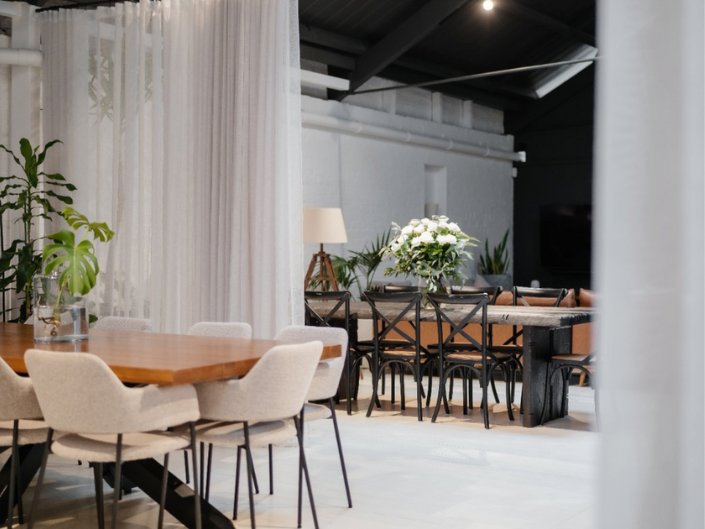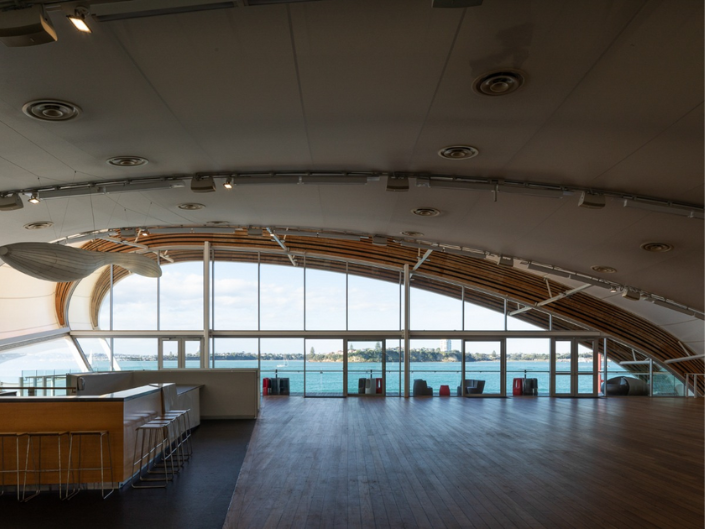Why Pop-Up Retail Spaces Are in High Demand Right Now
- Details
The Pop-Up Movement is Having a Moment
Once a scrappy idea for indie brands and side hustlers, pop-up shops have grown into a full-blown retail revolution. What was once considered a novelty—a weekend stall in an empty shopfront or a holiday-season trial—has now become a serious strategy for both emerging and established brands.
In 2025, pop-up retail is booming. Whether it's a fashion label taking over a heritage building for a limited launch, a plant-based café appearing inside a design showroom, or an eCommerce brand dipping its toes into the real-world experience, everyone wants a piece of the pop-up pie.
So what’s driving this shift? Why are so many businesses choosing short-term, flexible spaces over traditional leases?
Let’s break it down.
1. Flexibility is the New Normal
In a post-pandemic world, adaptability is everything. Pop-up retail offers something that traditional bricks-and-mortar stores can’t: low-commitment, high-impact space.
Brands can rent a retail location for a day, a week, or a month, depending on their goals and budget. That means no 5-year leases, no massive fit-out investments, and no long-term risks.
Perfect for:
- Seasonal product launches
- Event-based marketing
- Brand testing in new markets
- Holiday promotions
- Collabs with other brands or creators
The pop-up model allows businesses to stay nimble, test ideas, and respond quickly to trends—all without being tied down.
2. eCommerce Brands Want Real-World Touchpoints
Online-first brands are leading the charge when it comes to pop-up retail, and it’s easy to see why.
eCommerce businesses thrive in the digital world, but they miss the magic of face-to-face interaction. A pop-up shop allows them to:
- Let customers touch, try, and experience products IRL
- Build stronger brand loyalty through personal connection
- Collect instant feedback from their target audience
- Create social media content that feels local and grounded
It’s also a great way to drive sales, especially when paired with scarcity and exclusivity (“only here for three days!”). For customers, that urgency creates a buzz—and for brands, it translates to impact.
3. Retail is All About the Experience Now
Gone are the days of purely transactional shopping. Today’s consumers are experience-driven—they want something memorable, not just functional.
Pop-ups are perfectly suited to this shift because they’re inherently immersive. They’re events, moments, mini-worlds that feel special.
Think:
- A one-day-only sneaker drop with live DJs and customisation stations
- A scent experience for a new fragrance brand inside a botanical glasshouse
- A homeware pop-up styled like an actual apartment, where you can buy everything in the room
The pop-up format gives brands a creative sandbox to design experiences that stick in the customer’s mind, long after the doors close.
4. Location, Location… Rotation?
Pop-ups open the door to test multiple locations in a short amount of time. Instead of locking into a single neighbourhood, a brand can rotate its presence across a city—or even multiple cities—over a few months.
This approach helps brands:
- Test foot traffic in different areas
- Understand where their audience is most engaged
- Build local followings
- Stay fresh and exciting
It’s like being a local and a tourist brand all at once—and customers love the surprise and delight of discovering something new in an unexpected spot.
5. It’s a Low-Cost Entry Point for New Brands
For emerging businesses, opening a full-scale store can feel financially impossible. Pop-up spaces offer a lower barrier to entry with more manageable overheads.
There’s no long-term lease, and many spaces already come with basic fit-outs, furniture, or retail fixtures, making it easier and faster to launch.
Pop-ups allow new brands to:
- Test viability before scaling
- Generate revenue and exposure quickly
- Build buzz with minimal investment
- Gain firsthand customer insights
It’s the entrepreneurial sweet spot: a chance to dip into the retail world without risking everything.
6. They Create Shareable Moments
Want your brand to show up on Instagram, TikTok, or local blogs? Make your pop-up highly visual and highly experiential.
Pop-up retail spaces are a dream for content creation because they’re designed to be photographed and shared. Think bold signage, quirky installations, themed interiors, or local collaborations—anything that makes people stop, snap, and tag.
A well-designed pop-up becomes a mini-PR machine, helping spread the word far beyond the shopfront walls. Free marketing? Yes, please.
7. Landlords Love Filling Empty Space
On the flip side, the rise of pop-up demand has also sparked interest from property owners and landlords who want to activate vacant retail spaces.
Rather than leaving a storefront empty, landlords can rent it short-term and generate income while keeping the space visible and lively. It’s a win-win:
- Brands get a unique venue
- Landlords fill space and drive foot traffic
- The surrounding area stays vibrant
This is especially valuable in city centres or malls where foot traffic matters, and even more so in post-COVID recovery zones trying to revive main streets.
8. Brands Can Collaborate & Co-Create
Pop-up shops don’t have to be solo ventures. In fact, collaborative pop-ups are on the rise, where multiple brands, creators, or local businesses come together to co-host a retail experience.
Examples include:
- A fashion brand teaming up with a local artist and café
- A skincare brand partnering with a yoga studio for a wellness-themed pop-up
- Independent makers sharing space for a curated mini-market
These partnerships not only reduce costs but also bring in diverse audiences and fresh creative ideas. Collaboration = multiplication.
9. Consumers Are Seeking Local & Limited
In a world of fast everything, there’s growing love for the local, limited, and handcrafted.
Pop-ups speak directly to that desire. They feel fleeting, rare, and intentionally curated. When a pop-up appears, it feels like a secret you’re lucky to stumble upon—not another chain store.
This exclusivity and sense of discovery create a deeper emotional connection between brand and customer. It’s not just a purchase; it’s a memory.
10. Digital Can’t Replace Real-World Engagement
Yes, the future is digital. But no app, AR filter, or chatbot can truly replicate the feeling of walking into a thoughtfully designed space, chatting with the maker, and walking out with something tangible.
Pop-ups offer a tactile, human-centric experience that cuts through the noise of the digital world. And in an age of constant screen time, that offline moment has never felt more refreshing, or more valuable.
The Power of Pop-Ups
The demand for pop-up retail spaces isn’t just a trend—it’s a reflection of how modern retail is evolving.
Customers want connection. Brands want flexibility. Creatives want immersive, shareable experiences. And pop-ups bring all of that together into one dynamic, temporary, high-impact space.
Whether you're launching a product, testing a market, building a community, or just trying something new, pop-up shops are the ultimate playground for retail in 2025 and beyond.
Want to find the perfect pop-up space for your brand? Explore unique retail spaces across New Zealand at Sharedspace.co.nz, where creative brands meet flexible spaces.
Enjoyed this article?
Check out How to Turn Your Unused Space into Income with Sharedspace.







